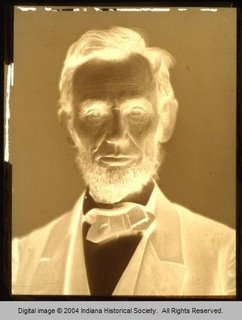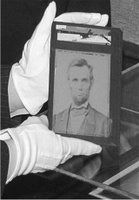Sheila Metzner
John Stevenson Gallery

Lotus I, 2005
Fresson Print
http://www.johnstevenson-gallery.com/me ... 06_tn.html
http://www.johnstevenson-gallery.com/me ... /text.html
The Fresson Process
Photo Prints Using Carbon, a Unique Technique Offers Artistic Possibilities
This photographic printing process using coal makes it possible to obtain paper prints that do not deteriorate in light and which have a very special luminosity and grain. The well-known photographers Batho, Horvat, Tourdjman and Faucon discuss this printing process.
Bernard Faucon takes a photograph of one of the Lubéron hills, which then reappears in the Fresson studio. Michel Fresson uses this photograph and the subsequent laboratory work on it to comment on and explain the originality and history of the process which was developed by his grandfather and adapted by his father for color printing. Bernard Plossu, again using the Fresson method, traces a black and white print back in time to the moment that the photograph was taken. The key factors that induce many artists to associate their work with the renown and quality of the Fresson tradition are the technical and artistic possibilities which this process offers.
The Grand Perspective
by Hunter Drohojowska-Philp

Sheila Metzner, Calla Lily, 2000
Sheila Metzner has it all. A career in commercial art, a happy marriage, five children, a second career as a fine art photographer with a parallel track as a fashion photographer and still photographer on various films. Her shows in galleries and museums draw positive reviews. And three books of her photographs have been published. The most recent volume, Inherit the Earth from Bullfinch Press, is nearly as big in size as its subject, the monumental wonders of the world from the icebergs of Alaska to the pyramids of Egypt.
Metzner, now 61, spent 11 years traveling to remote regions and taking pictures that moved her, from the elephantine trunks of trees in the Costa Rican rain forest to the red rock arches of Moab, Utah. She brought the same grand perspective to each exotic locale, just as she did when she photographed her native New York, restoring lost glamour to the Brooklyn Bridge or Empire State Building.
Both bodies of work are on view in Los Angeles this month. The colored landscape prints from Inherit the Earth and her well-known pictures of flowers are at the Stephen Cohen Gallery while the black and white platinum prints of Manhattan are at the Paul Kopeikin Gallery. Both shows run through Jan. 6. In addition, a show called "Inherit the Earth" is at Tibet House in New York, Dec 14, 2000-Feb. 10, 2001.
…Whether the subject is a waterfall, an orchid or a child, Metzner's photographs exude a sense of lavishness. In part, this is due to the use of the Fresson technique, a rare, turn-of-the-century carbon process that lends a soft, grainy patina to the colors in her photographs.
The Fresson family invented the technique in France in 1895, and its descendents remain the only practitioners. The surfaces and hues created through the process are romantic and unusual, resembling painting, and by using pigments instead of dyes, the prints do not fade with time.
After seeing a Fresson photograph in 1979, Metzner wrote a six-page letter to Michel Fresson, grandson of the inventor, pleading with him to print her work. By return post, she received a price list for the services. Next, she flew to Paris to see Fresson, who agreed to work with her on one condition. "He said he wouldn't work with me if I wouldn't send the instructions in French," she says. "So I did it."
The Fresson technique accentuates Metzner's prints of landscapes in which color is applied in a monochrome tint over an entire picture. In addition, the technique is especially effective on Metzner's celebrated flowers. In their elegant simplicity and glimmering use of light, her photographs of orchids and tulips are indebted to early 20th century photographers like Edward Steichen and Edward Weston.
http://www.artnet.com/magazine/FEATURES ... -19-00.asp
|






























